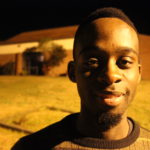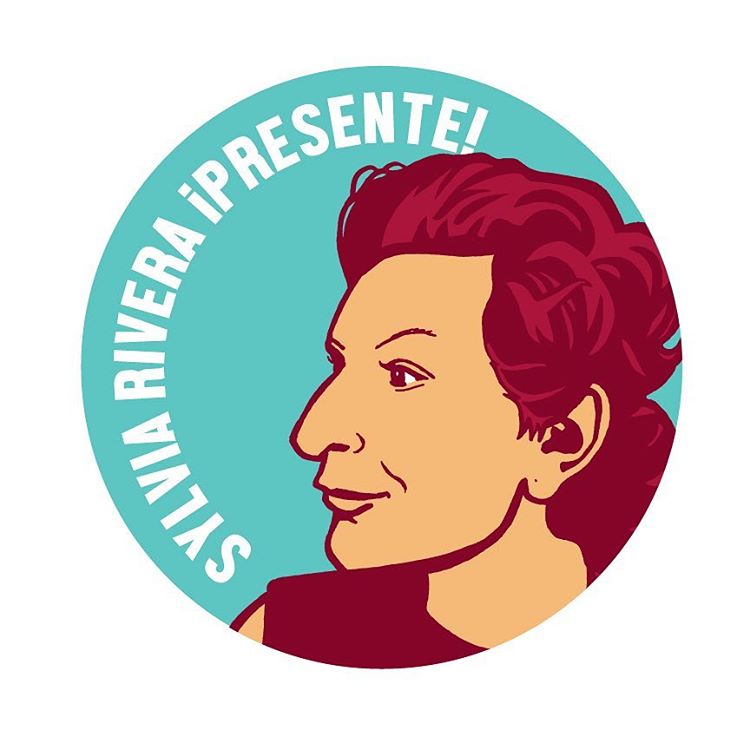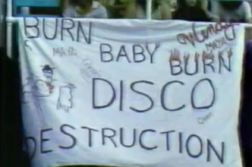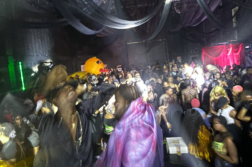What is appropriate to wear at pride? What most defines an individual’s ability to be “respectable” and why does it still matter today? (looking at you twitter). Getting to the bottom of this issue, means historicizing it in the greater context of our shared history as members of the LGBTQ+ community. Should respectability and assimilation hold precedence in historically marginalized communities? or does it work counteractively to our progress?
On June 24, 1973, the day of the annual Christopher Street Liberation Day Rally in New York City, Sylvia Rivera, a Latina transwoman, jumped on stage to interrupt feminist activist Jean O’Leary in the middle of her speech. Jean O’Leary, who just the previous year founded the Lesbian Feminist Liberation (LFL), stood on stage that day to argue against the inclusion of drag queens, transwomen and other gender non-conforming individuals in the rally and the greater gay liberation movement. Undeterred by the rebuttal, Rivera took the microphone, and for the next four minutes delivered her famous “Y’all Better Quiet Down” Speech. Rivera spoke candidly to the crowd about the sacrifices often endured by drag queens and trans women such as herself for the cause of gay liberation, only to face the constant threat of erasure from the movement. “You go to bars because of what drag queens did for you, and these bitches tell us to quit being ourselves?”, Rivera remarked. Though her speech was met by a steady stream of boos, it’s sentiments were nonetheless true. The “drags”, the “Queens” and other gender non-conforming individuals were the heart and soul of the early struggle for gay rights. Despite this, the greater community sought frequently to erase them from the movement.
In June of 1968, the landmark documentary The Queen, was released to theaters across the United States to positive reviews and a surprisingly congratulatory reception by mainstream media outlets. However, that same month, a review from Vector, a magazine published by the Society for Individual Rights (SIR), a major gay rights organization, had a different stance. Vector chided the film for being a misrepresentation of the community, and its distaste for drag queens was glaringly obvious. They argued that the film only helped to further the myth that all gay men were “nelly drag queens”. Commenting further, Vector wrote, “it isn’t all feathers and wigs in gay life.” SIR’s sentiments were the rule, not the exception amongst gay rights organization in the 1960’s. Founded in 1950, the Mattachine society was one of the first gay rights organizations to gain considerable traction in the United States. It was founded by a group of gay men lead by activist Harry Hay for the purpose of improving the rights of gay men and lesbian women around the country, and was known that the founders of the society actively discouraged members from engaging in gender expression that was considered ‘deviant’. During the late 1960’s, their protests had strict dress codes. Women had to wear dresses, and men had to wear white shirts and slacks. Arguably the most pinnacle organization for gay rights in the United States, the Mattachine society, made it clear that gender non-conforming individuals were not in any way welcome to their demonstrations.
The failure of the gay liberation movements of the 1960’s and 1970’s to pay attention to its gender non-conforming members isn’t just a representation of the transphobia that existed openly at the time. Perhaps most profoundly was its failure in representing the loudest and most outspoken members of the community.
The 1966 Compton’s Cafeteria Riot stands today as arguably the first demonstration to protest police violence against transgender individuals in the nation. In her documentary Screaming Queens: The Riot at Compton’s Cafeteria, director Susan Stryker, assesses the reality of the patrons at Compton’s Cafeteria. They were trans women and drag queens who, according to participants of the riot themselves, were not allowed at other gay bars. If the cafe was their only chance to enjoy themselves during a night out, that was quickly dashed when staff began to routinely call the police, who arrested them on the charge of ‘female impersonation’, which at the time was still considered a misdemeanor. Following the implementation of a service fee against trans and other gender non-conforming individuals by Compton’s staff, the ‘drags and queens’ began to protest. When police arrived the bar erupted, eventually a police car had its windows broken, the restaurant’s windows were smashed and a newsstand was burned down. Though the riot was eventually put down, the ‘drags and queens’ made their voices heard. Three years later, New York was ripe for a riot, and it would have been nowhere else, but the Stonewall Inn.
What made the Stonewall Inn different from other New York gay bars is what made Compton’s Cafeteria different from the other gay bars in San Francisco. Stonewall was the bar for the ‘drags and queens’. Much like in the case of San Francisco, New York’s gay bars also practiced barring gender non-conforming individuals from enjoying themselves at their establishments. In an article for The Atlantic in 1969, journalist Dick Leisch, who came to witness the riots had this to say about the Stonewall Inn:
“Why the Stonewall, and not the Sewer or the Snake Pit? The answer lies, we believe, in the unique nature of the Stonewall. This club was more than a dance bar, more than just a gay gathering place. It catered largely to a group of people who are not welcome in, or cannot afford, other places of homosexual social gathering. The “drags” and the “queens”, two groups which would find a chilly reception or a barred door at most of the other gay bars and clubs, formed the “regulars” at the Stonewall. To a large extent, the club was for them…. Apart from the Goldbug and the One Two Three, “drags” and “queens” had no place but the Stonewall….”.
Leisch explains plainly, the politics that existed amongst New York’s gay bars in that era. With the exception of a few bars, the Stonewall Inn, was the bar for the ‘drags and queens’, people like Sylvia Rivera. When Rivera took the microphone to speak to the crowd at the Christopher Street Liberation Day Rally, she didn’t mince her words, she didn’t have to. The pinnacle of gay liberation and rebellion often times fell on the backs of the ‘drags and queens’. It was the gender non-conforming individuals, the fairies, who faced the brunt of the overt oppression, and when pushed to a corner fought to defend their autonomy by all means necessary.
The legacy of gay liberation often lies on the back of the gender non-conforming individuals who heralded the movement. Looking honestly at our shared history as members of the LGBT community grants the opportunity to look critically at even the most sacred points in our history. Recognizing the importance of gender non-conforming persons in the growth of the movement also allows us to look into the ways the community sought to silence and erase the importance of its loudest and most revolutionary members. Sylvia Rivera’s courage in addressing a largely transphobic crowd forty-eight years ago, a crowd that wanted ‘drags and queens’ like her out of the movement is a reminder of why exactly their rally existed in the first place, and their legacy endures. In an era where RuPaul’s Drag Race is an Emmy winning Television show and Pose is going on to a third season, perhaps for the first time, we as a community, and society at large are beginning to put focus on the lives and stories that brought us to where we are today, the stories of the ‘drags and the queens’.
 Etamaze Nkiri is a History major at the University of Oklahoma with a keen interest in Latin American, African American and LGBTQ+ histories. His internship last year with the Greenwood Chamber of Commerce unlocked in him the importance of oftentimes hidden and overlooked oral histories. Nkiri began free-lancing this February, and has thus far written for HistoryNet.
Etamaze Nkiri is a History major at the University of Oklahoma with a keen interest in Latin American, African American and LGBTQ+ histories. His internship last year with the Greenwood Chamber of Commerce unlocked in him the importance of oftentimes hidden and overlooked oral histories. Nkiri began free-lancing this February, and has thus far written for HistoryNet.






